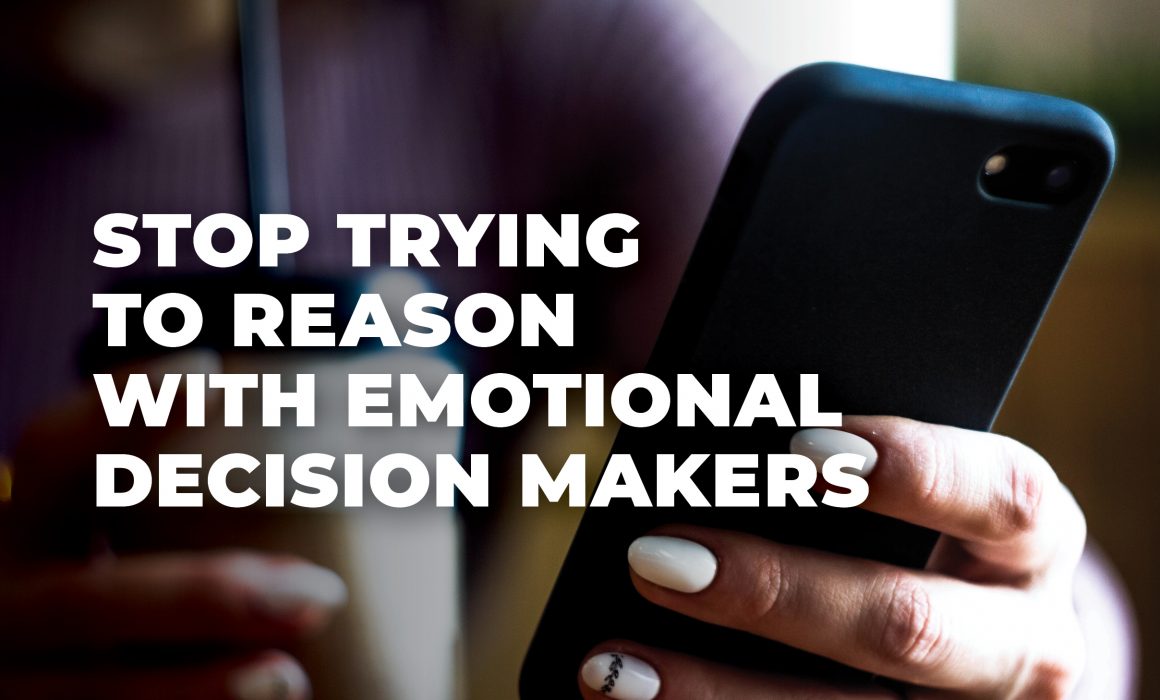Stop Trying to Reason with Emotional Decision Makers
The science behind decision making has come a long way in the past decade. Yet, for some reason, many marketers haven’t shifted their messaging strategies to address this simple fact:
Human decision making is based on emotion and not reason/rationality
Why do marketers insist on trying to showcase so many facts (features) to “help” consumers reason their way to the decision they desire? A more productive path is to build messaging based on benefits (outcomes) that will help elicit the desired emotional reaction and therefore the desired behavior.
Let’s look at a couple of examples:
The bad: When it comes to car advertising, manufacturers like to load up their ads with as many stats as they can. Let’s take miles per gallon (MPG) as one such feature. If you’re buying a Toyota Prius, you’re interested in this ultra-fuel-efficient car because it will save you money or help the environment, not because of the MPG. Yet, many car companies lead with MPG and other features.
The good: Let’s roll back about 20 years with the launch of the iPod. Steve Jobs famously pitched Apple’s new music device with the message: 1,000 songs in your pocket. Brilliant. He didn’t focus on the device’s memory capacity because consumers couldn’t translate gigabytes to any sort of benefit. Instead, he focused on the convenience and transportability aspects.
Like it or not, we’re self-centered beings. We’re naturally drawn to things that will make our lives better and/or improve our self-image. We tend to buy things that reinforce a mental picture we are creating of ourselves and/or our lives. We inherently act on things that activate feelings or desired outcomes – we really only care how a product or service can benefit us or support our values.
Next time you’re working on a messaging strategy, start with a benefit-driven approach. Think from the perspective of your customer or client – What problem does the product/service solve? To what end? Why would anyone care? And keep asking those questions until you can’t go any further.
If you need a quick test of whether you’ve arrived at a benefit-focused approach, see if your messages feel like you’re helping the target solve a problem (benefit) or whether you’re selling/educating them (features/facts). There’s a time and place for features, but they should be reasons to believe the benefits. Not vice versa.
If you’d like to explore what a benefit-first messaging strategy looks like for you and your organization, let’s talk. Feel free to reach out to me at adam.hoover@borshoff.biz.


